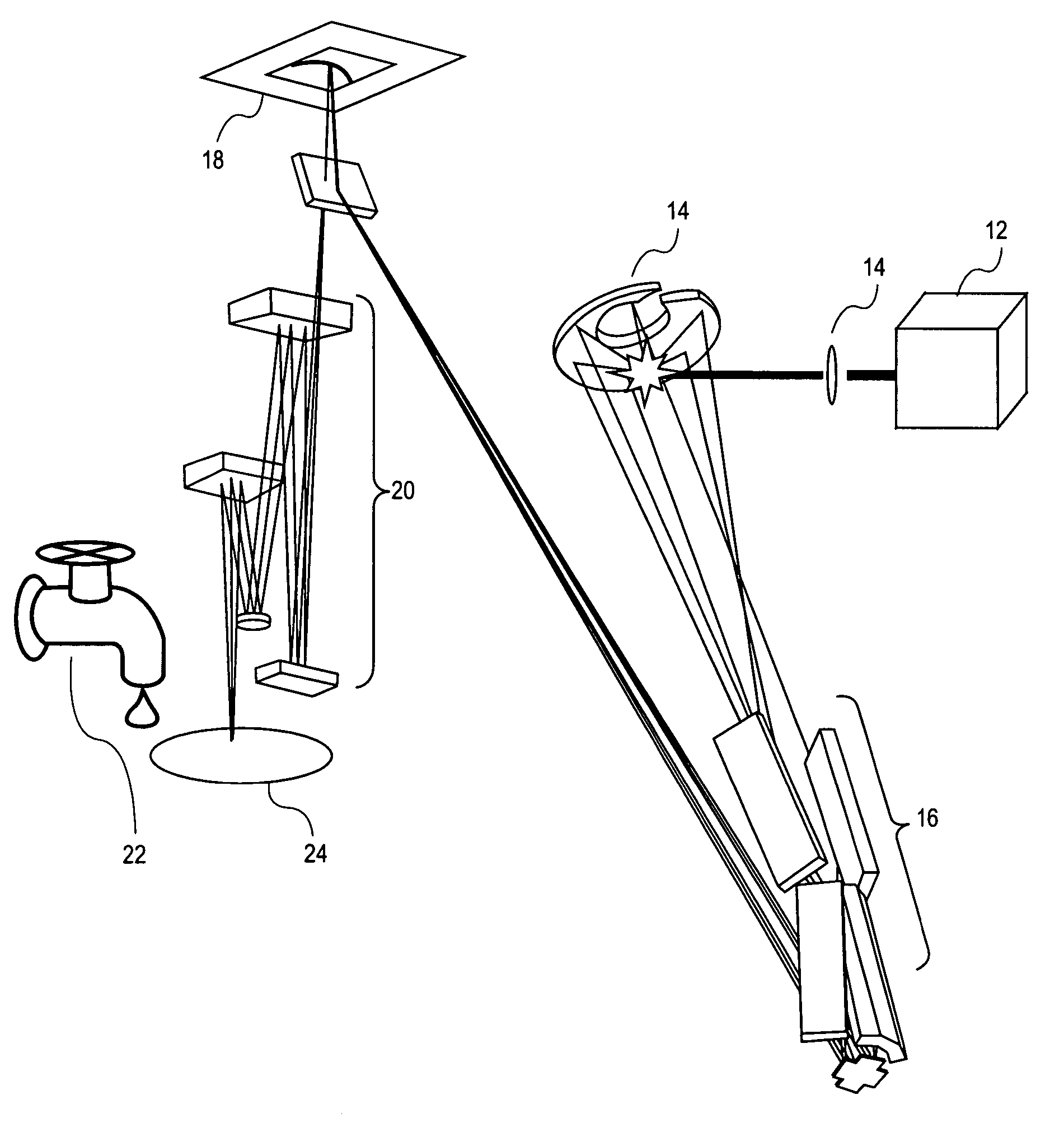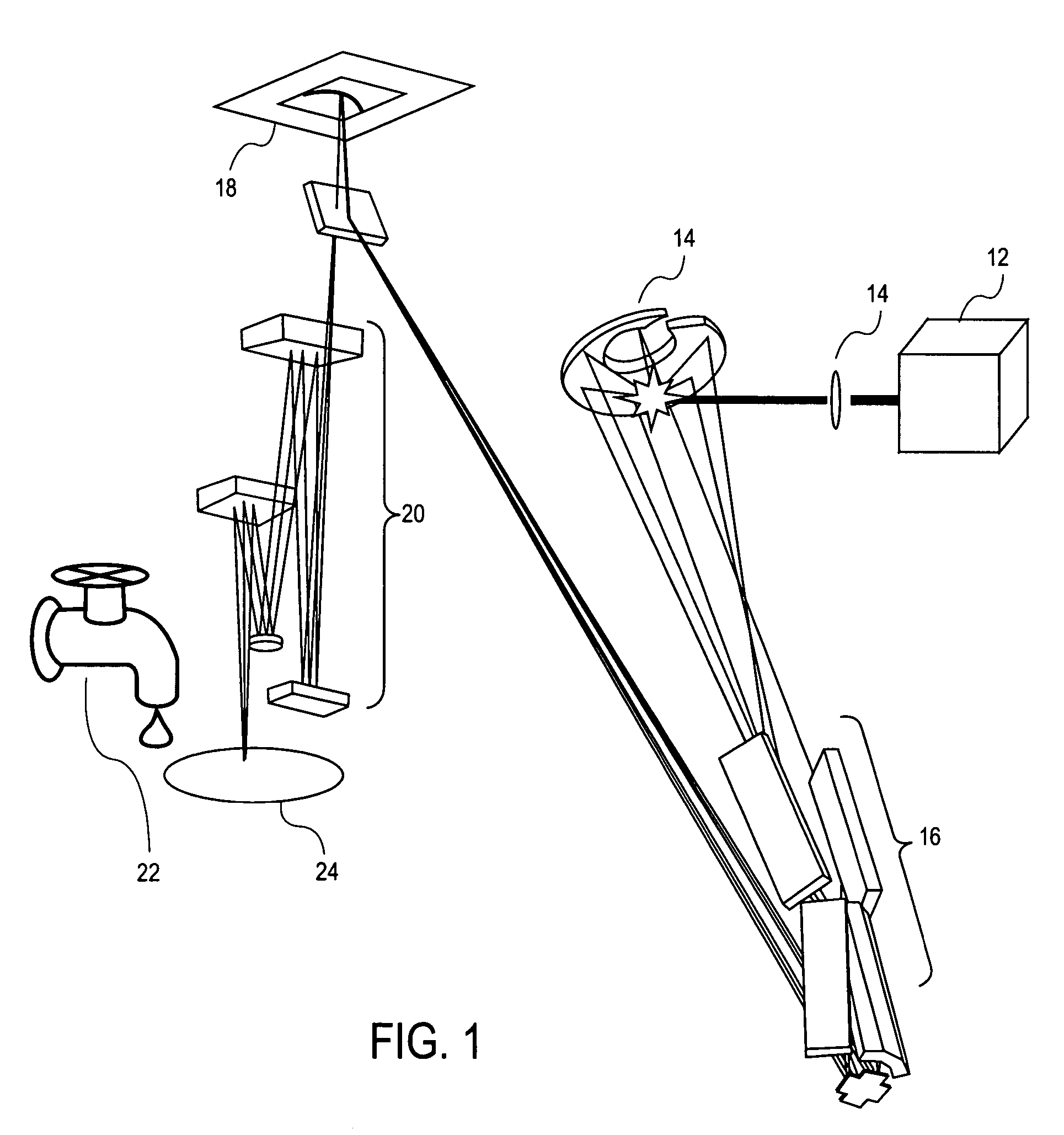Free electron laser
- Summary
- Abstract
- Description
- Claims
- Application Information
AI Technical Summary
Problems solved by technology
Method used
Image
Examples
Embodiment Construction
[0019]FIG. 1 illustrates an extreme ultraviolet (EUV) lithography system 10, according to an embodiment of the invention, which can be used in the manufacture of integrated circuits (ICs). The lithography system 10 includes an EUV light source 12, collector optics 14, an illuminator 16, a reflective mask 18, reflective reduction optics 20 and a resist source 22, for the purposes of making lithography patterns on a wafer 24.
[0020] The light source 12 is an EUV radiation light source (i.e., light source 12 radiates light in the 5-20 nm wavelength range). Ideally, the light source 12 produces EUV radiation having an approximately 13.5 nm wavelength. EUV radiation is referred to throughout the specification; however, it will be appreciated by those of skill in the art that EUV radiation also refers to EUV light.
[0021] The collector optics 14 are arranged to collect the EUV radiation from the light source 12 and direct the EUV radiation toward the illuminator 16. The collector optics 1...
PUM
 Login to View More
Login to View More Abstract
Description
Claims
Application Information
 Login to View More
Login to View More - R&D
- Intellectual Property
- Life Sciences
- Materials
- Tech Scout
- Unparalleled Data Quality
- Higher Quality Content
- 60% Fewer Hallucinations
Browse by: Latest US Patents, China's latest patents, Technical Efficacy Thesaurus, Application Domain, Technology Topic, Popular Technical Reports.
© 2025 PatSnap. All rights reserved.Legal|Privacy policy|Modern Slavery Act Transparency Statement|Sitemap|About US| Contact US: help@patsnap.com



